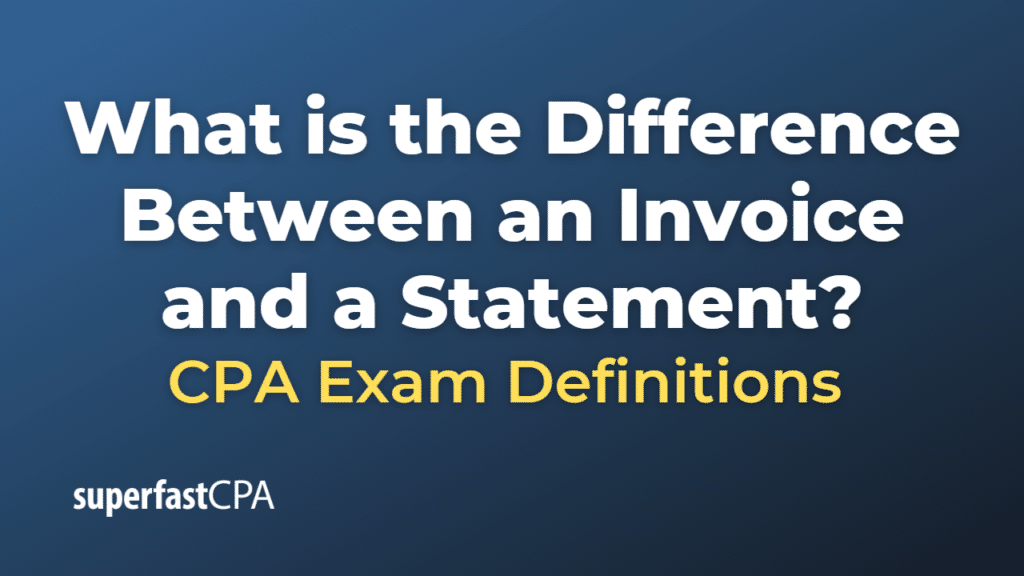Difference Between an Invoice and a Statement
An invoice and a statement are both important accounting documents used in business transactions, but they serve different purposes:
- Invoice: An invoice is a detailed bill from a vendor for goods or services rendered, and it’s usually sent to request payment from the buyer. It provides specific information about a single transaction, such as the items sold, quantity, price per unit, total cost, terms of payment, invoice date, and due date. An invoice is typically sent after the goods or services have been delivered but before payment has been received. Invoices are also useful for tracking sales, calculating taxes, and maintaining inventory levels.
- Statement: A statement is a summary document that shows the overall account balance owed by a customer over a certain period. It includes a list of all invoices sent to the customer, payments received, credits issued, and any outstanding balance. Statements don’t include as much detail about individual transactions as invoices do; instead, they give an overall picture of a customer’s account at a specific point in time. They are usually sent at regular intervals (e.g., monthly) to remind customers of their outstanding balances and to encourage payment of any overdue amounts.
In summary, while an invoice is a document requesting payment for a specific transaction, a statement is a summary of all transactions (including invoices, payments, and credits) within a specific period. An invoice indicates the amount due for a specific transaction, while a statement shows the total balance due on an account.
Example of the Difference Between an Invoice and a Statement
Let’s consider a hypothetical example involving a furniture supplier, “FurniWorld,” and a retailer, “HomeDecor.”
Invoice:
On January 15, FurniWorld sells 50 tables to HomeDecor. FurniWorld then issues an invoice to HomeDecor that includes the following details:
- Invoice Number: 00123
- Invoice Date: January 15
- Description: 50 Oak Dining Tables
- Unit Price: $100 per table
- Total Cost: $5000 (50 tables x $100 per table)
- Payment Terms: Net 30 (Payment due by February 14)
The invoice is a specific bill for this transaction and is used to request payment from HomeDecor for the 50 tables.
Statement:
At the end of the month (January 31), FurniWorld sends HomeDecor a statement summarizing all transactions in January. Suppose HomeDecor had made two more purchases from FurniWorld during January, and made one payment. The statement might look something like this:
- Opening Balance (January 1): $0
- Invoice 00123 (January 15): $5000
- Invoice 00124 (January 20): $3000
- Invoice 00125 (January 25): $2000
- Payment received (January 27): -$4000
- Closing Balance (January 31): $6000
The statement provides a summary of all invoices and payments during the month of January and shows the outstanding balance that HomeDecor owes to FurniWorld as of January 31.
In this example, each invoice provides details about a specific transaction, while the statement summarizes all transactions over a period of time and the total balance due.












